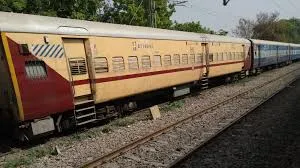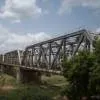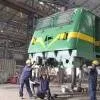IR’s ambitious 90,000 wagons by 2025 order is highly dependent on the cast iron wheel sets, however, the manufacturing capacity of wheel sets is inadequate to meet the current demand. Infrastructure Today attempts to decode the viability of this bulk order.
Indian Railways came up with an ambitious plan of adding 90,000 wagons by 2025. This is ought to boost the domestic wagon manufacturing sector in a big way. The Indian Railways intended to expand the number of wagons by 90,000 with the commissioning of the dedicated freight corridors, and with a goal to increase the freight transport share through the railways.
India has an estimated rail wagons production capacity of 30,000 to 40,000 wagons per year, but this capacity has historically been underutilised. Acting as a ray of sunshine, this imposing initiative by Indian Railways gave the wagon manufacturers plenty of orders, which will raise the overall capacity utilisation from a modest 40 per cent in the past, to approximately 70-80 per cent in the coming years.
The big boost
The objective of the government behind this huge order is to accomplish cost advantage by purchasing wagons in bulk, and at the same time provide an improved revenue visibility to the wagon manufacturers. Turning back the history pages, Indian Railways had never announced orders for more than 10,000 wagons in a single fiscal year. In the hindsight, industry's prospects have significantly improved with this huge order of 90,000 wagons.
Over the next three years, it is projected 25,000 to 40,000 wagons to be manufactured annually. The flow of orders from the private sector has tremendously improved in the current fiscal, and this significant order from the Indian Railways has only added to their glory. With a healthy order pipeline, a moderate intensity of pricing is anticipated from the wagon manufacturers. However, the catering of wheels and axles in such huge volume, within the stipulated timeframe is still dubious, considering the existing production capacity.
Time to upgrade
Over the past years the annual average wagon procurement by IR was between 12,000-15,000 wagons. However, NRP estimates an annual requirement of 28,000-32,000 wagons to cater to the targeted freight volumes over the next decade. The NRP aims to upgrade the existing track network of IR to carry 25 tonne axle load to increase the capacity and productivity of the network in five years. However, the entire fleet of 90,000 wagons procured under the IR are of the existing 22.9 tonne axle load. Given that a wagon has an operational life of 30-35 years, the induction of such a large volume of low-capacity wagons will have a significant long-term negative impact on the efficiency and productivity of the network.
The Indian Railways planned to procure 90,000 wagons at a time when the steel prices were at the highest ever. The price increase for wagons is entirely due to rising steel costs. A wagon that once cost Rs 3 million now costs more than Rs 4 million.
The ground reality
The huge wagon purchase plan has also got entangled over issues associated with sourcing of wheel sets. The Indian Railways owned Rail Wheel Factory (RWF) is the only source for supplying wheel sets for wagons in India. Up until 2017, the IR allowed the import of wheel sets, and 30-40 per cent of these came from China. However, following the border disputes in 2017, the government imposed a ban on all imports from China and mandated that wheel sets should only be purchased from RWF.
Also, this was done to guarantee that RWF's expanding capacity was used to its fullest extent. However, as RWF's capacity growth went on and in the wake of the tender to buy 90,000 wagons, IR permitted the private sector to import wheel sets and instructed RWF to only supply wheels to the wagons it had purchased.
RWF was informally advised not to provide any wheel sets for private wagons and not even to consider a letter of intent from them. The current geopolitical situation in Ukraine, the leading manufacturer and supplier of wheel sets having 30-40 per cent share in Europe, has caused a considerable increase in pricing and delivery times for wheel sets globally, despite the fact that IR has opened the option of importing wheel sets. As a result, China now supplies all of Europe's demand for wheel sets.
The pricing dilemma
The price difference for wheel sets has reached Rs 4 lakh per wagon as a result of the steel prices and the demand and supply scenario. The impact on a wagon is almost to the tune of 35-40% when the increase in the price of steel and difference in the imported wheel sets are added. The Indian Railways Financial Corporation (IRFC), IR's lending division, has historically leased wagons. The IRFC can obtain capital from the market at favourable rates because it is a sovereign-backed institution. This is also becoming a constraint, as a result of the recent increase in bond yields, which will affect the cost of borrowing for IRFC.
It is understood the lease charges that IR will pay IRFC for leasing the wagons will increase, as a result of the high asset prices and the higher cost of borrowing. The increasing lease fees would push up IR's operational costs even more. This, in turn, could force IR to raise tariffs or haulage costs at some point, hurting not only the competitiveness of rail transportation and IR's main goal of expanding modal share, but, also the government's efforts to lower the cost of logistics for the manufacturing and agricultural sectors.
Government’s action plan
Indian Railways is prepared to meet the demand for wheels and axles from the domestic market, besides looking for a swift supply from China due to increased orders for the production of coaches and wagons in the current fiscal. The contract to supply 30,000 axles for wagons was given to a Hongkong-based business with connections to China, and Mishra Dhatu Nigam Ltd (Midhani) has also been approached to produce 400 LHB axles.
A good amount of wheels for coaches and locomotives will also be procured from SAIL's Durgapur Steel Plant (DSP). The daunting task was accepted by DSP's Wheel and Axle Plant, which has been producing wheels for railway coaches, and it was successful in developing LHB coach wheels in accordance with the strict guidelines and standards of the Railways. Ultrasonic testing revealed that the manufacturing had no rejections, and the wheels from DSP were of good quality.
As an alternative to DSP's Wheel and Axle Plant, the Railways contracted with Rashtriya Ispat Nigam Ltd (RINL), a division of the Steel Ministry, to produce forged wheels for LHB coaches as well as for semi-high speed trains like the Vande Bharat Express. The LHB wheel prototype was produced at the Steel Ministry's plant after RDSO’s approval for mass production.
The Railways also contemplated the manufacturing of wheels and axles in the private sector with the increased order of rolling stock in mind. Certain private businesses had been instructed to research the wheel market in accordance with the Make-in-India programme. In order to satisfy the rising demand for axles and wheels, the Bangalore wheel plant's capacity has been increased. The measure is intended to guarantee that 2.5 lakh wheels are created for the 400 Vande Bharat Express trains that would be produced during the next three years.
As the contract for the Vande Bharat trains has been given to private parties, it is up to them to arrange wheels and axles. Around 128 wheels required for the Vande Bharat train trials were airlifted from Romania to Chennai before being transported to Hyderabad. The Vande Bharat Express trains' wheels will be made at Durgapur Steel Works using the approved design after the company already manufactured 45,000 forged wheels for the railways' LHB coaches.
In addition to the 7,000 LHB coaches in the current fiscal year, Railways plans to purchase about 90,000 wagons and 400 Vande Bharat trains over the course of the next three years.
Expert Speak:
Lalit Chandra Trivedi, Ex General Manager, Railways
On National Rail Plan roadmap...
National Railway Plan roadmap is in right direction. It aims to increase Railway’s share in transportation pie of the country from present 27 to 45 per cent. Requirement of net expansion, projection of rolling stock requirement, and other infrastructural inputs have been identified accordingly. This is important not only to achieve environmental goals, but also to bring down cost of logistics for the industry from the current average of 14-15 per cent to 8-9 per cent which is the norm in advanced economies like USA.
On 90,000 wagons order by Indian Railways...
Railways, on an average, have been inducting 15,000-16,000 wagons into its fleet every year conventionally. The supply order of 90,000 which have to be supplied over a period of three years is basically doubling the historical annual supply. Most important is that for the first time an order has a time duration of three years. This will help industry in planning inputs for the manufacturing and commit resources for a longer term perspective, helping it to bring down cost and improve quality.
To begin with, issues like availability of wheels, bearings, etc. will be faced, but once supply chains are established, which I have no doubt about, achieving a supply of 30,000 wagons per annum is not beyond the capability of Indian industry. In Indian Railways, more than 90 per cent manufacturing of wagons takes place in private sector. We have an ecosystem in private sector to support this level of supply.
Suggestions on wheel set manufacturing capacity deficit...
There is a need to augment capacity at Rail Wheel Factory at Banglore and Bela (Bihar) which manufacture cast wheels required for residual fleet of ICF coaches and wagons. In fact, basic problem in the case of wheels is in the area of forged wheels required for high speed coaches (LHB and Vande Bharat) and locomotives, for which we are 100 per cent dependent on import.
On IR’s target of 100% electrification...
This is one area where without doubt, IR has performed exceedingly well. This has significantly brought down cost of energy required for moving trains, besides bringing down dependence of country on HSD Oil which needs to be imported. Further benefits will accrue in future when Indian electricity grid is supported by renewable sources of energy. Electric traction has also enabled induction of high horse power locomotives, which can haul heavier trains at higher speeds in graded sections which are galore in IR. Speeds of trains have also increased as stops required for refuelling and change of traction are not required.
On expectations from railways in 2023...
I expect boost to containerised traffic to capture domestic cargo. I would certainly look forward to commissioning of DFCC, at least Dadri-Sonnager section and western DFCC to the boundary of Mumbai. Target of 100 per cent electrification is also likely to be achieved by December 2023. Connectivity of rail network with Kashmir valley, expansion in North East region, besides completion of gauge conversion projects are also expected to be completed substantially. I hope to see a march towards ‘Mission 3,000 Million Tonnes’ of IR to gain momentum.




















